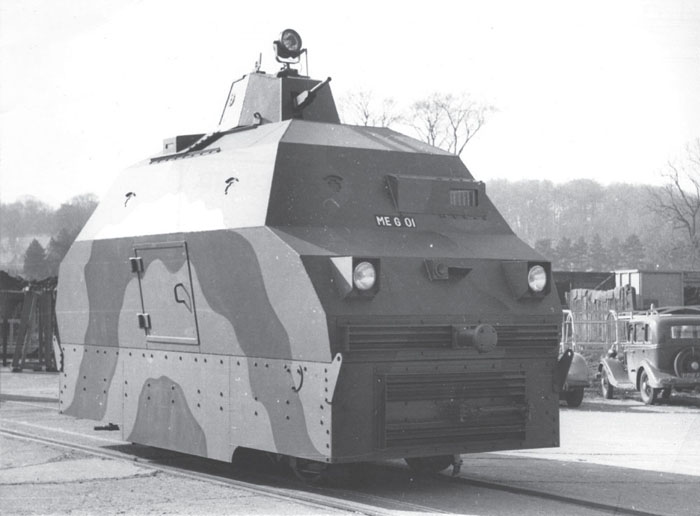
Although they did not deploy armoured trains in Portugal proper, the Portuguese did use them in their colonies which were affected by anti-colonialist uprisings, which in chronological order were Goa, Angola and Mozambique.1
Goa was one of the three territories in the western part of India settled and exploited by the Portuguese since the sixteenth century.2 After Britain granted independence to India in August 1947, nationalist movements attempted to disrupt communications between the three territories and Portugal by attacking economic targets and the transport system.3 Goa itself was finally invaded and annexed by India between 17 and 19 December 1961.

Wickham armoured trolley supplied for use in Goa, with a different turret to the models built for Malaysia.
(Photo: Wickham)
The first traffic on the Benguela Railway ran in 1905. The line was built following the discovery of copper in northern Rhodesia and Katanga in 1881. In the 1950s, the trains ran from Lobito to Elizabethville in the Belgian Congo. When the terrorist attacks began, armour plating was fitted to the cabs of the locomotives, and the inspection trolleys received complete armour protection. Additional trolley rolling chassis were ordered which were fitted with armour protection locally.4
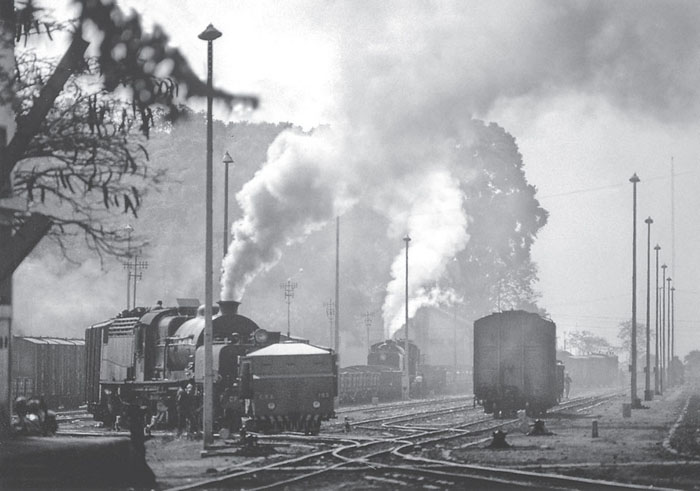
Behind armoured Wickham trolley No 193, Garratt Class 10 B No 323, followed by Garratt Class 10 D No 386 (4-8-2+2-8-4), both with armoured cabs, depart Luso en route to Munhango.
(Photo: Peter Bagshawe)
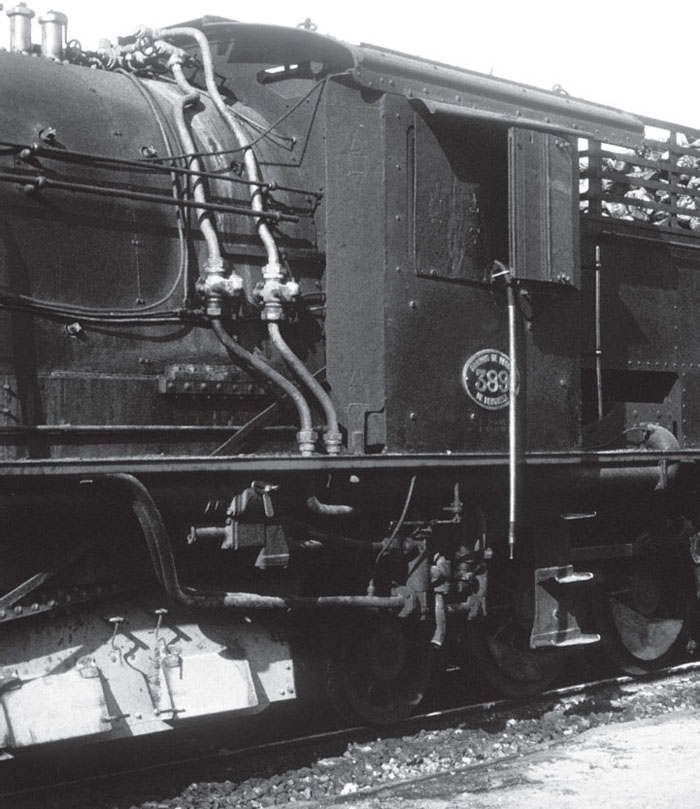
Close-up of the armoured cab on Garratt Class 10 E No 389.
(Photo: Peter Bagshawe)
The classic arrangement in zones liable to attack: an open bogie wagon in front of a Garratt on the Munhango–Luso line photographed on 27 August 1972.
(Photo: Peter Bagshawe)
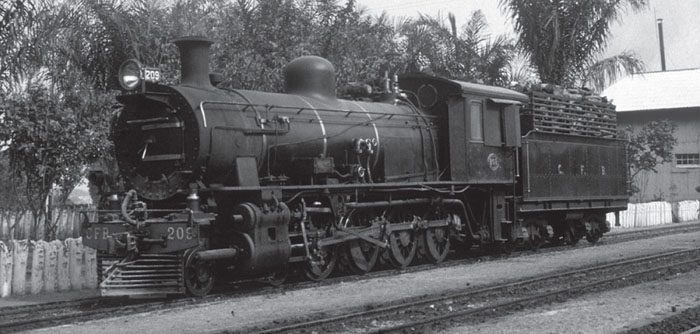
In Texeira de Souza Station, Class 9 A 4-8-0 engine No 209 with armoured cab.
(Photo: Peter Bagshawe)
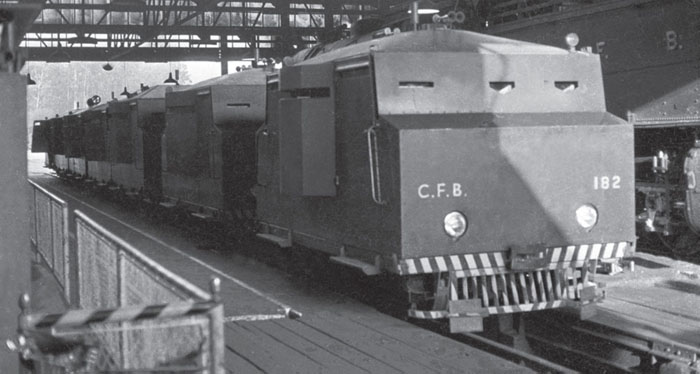
A line of armoured Wickhams parked in Luso Depot on the evening of 24 August 1972, when the train services stopped for the night for security reasons.
(Photo: Peter Bagshawe)
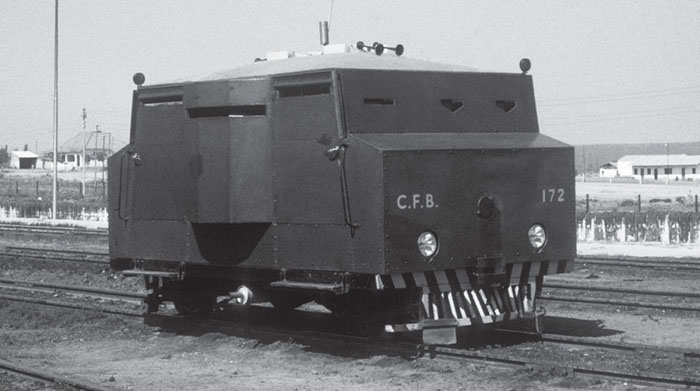
Armoured trolley No 172 in August 1972 at Munhango Depot, where a large number of these units were based.
(Photo: Peter Bagshawe)
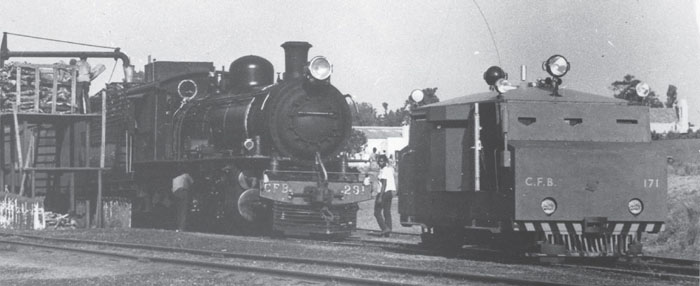
A Wickham trolley leads 4-8-0 engine No 231 at the head of a Texeira–Lobito mail train, seen at Cangumbe Station.
(Photo: Wickham)
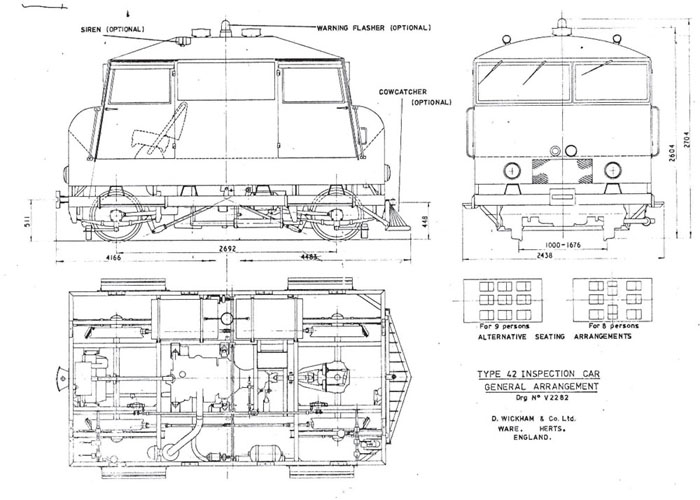
Wickham Type 42 Inspection Trolley (identical to the Wickham Type 40 Mk II), before the addition of armour protection.
(Document: Wickham)
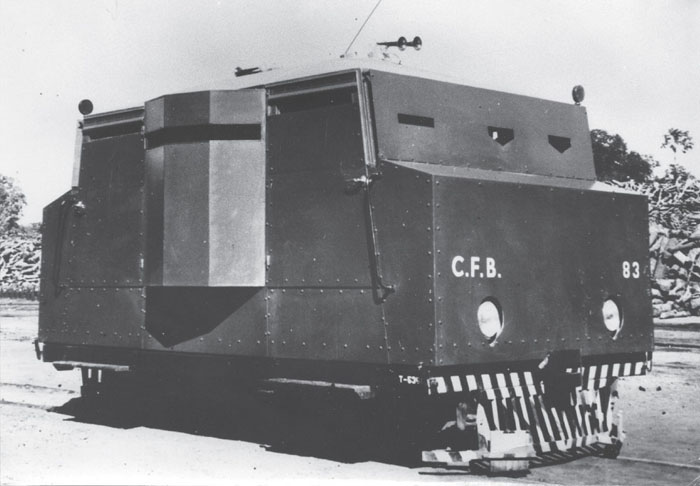
Trolley No 83, delivered in November 1967. In around 1968 ‘100’ was added to each serial number, which allows us to date this photo.
(Photos: Wickham)
Two Wickham running chassis (Nos 191 and 192 built in 1969) were ordered and sent to Mozambique to be locally armoured.
In 1972 Portugal entered into secret negotiations with the French firm of SOCOFER with a view to supplying the Mozambique colony with armoured trolleys, in the belief that France had retained a stock of trolleys left over from the War in Algeria. SOCOFER, based in the former Billard Works in Tours, carried out a design study, but the units were never built, as no official order was forthcoming. One unusual feature for an armoured vehicle at this late date was an open-topped hull covered with an awning, for ventilation in the hot climate.
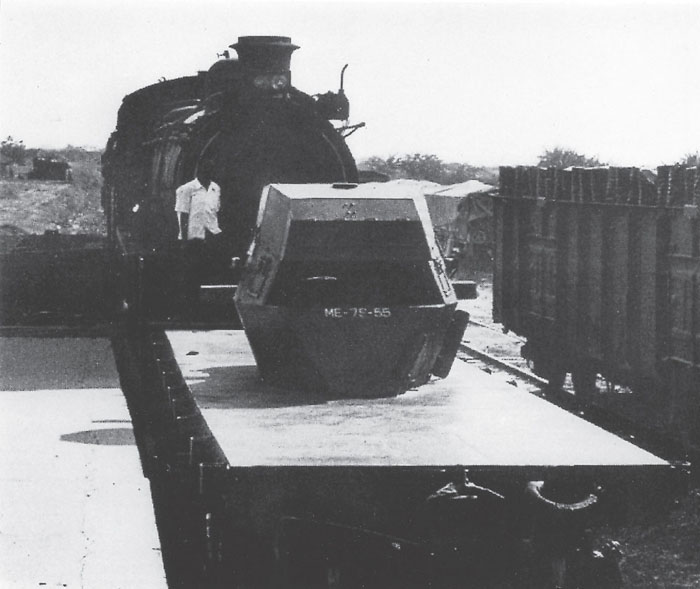
Zorra was the name given to this armoured hull from an old Auto-Metralhadora-Daimler 4x4 Mod.F/64 (the Portuguese version of the British Dingo) mounted on a flat wagon. It offered scant protection against heavy weapons, but served as an excellent observation post for the five or six soldiers of its crew. Note the extra armour box added on top of the original hull.
(Photo: All Rights Reserved)
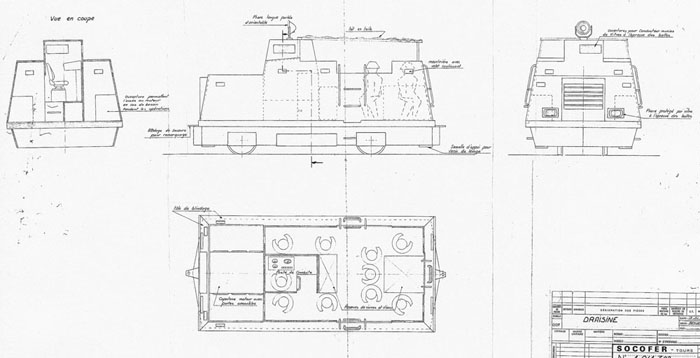
SOCOFER trolley design for Mozambique, which remained on the drawing board.
(Drawing: SOCOFER Archives, in the collection of Paul Malmassari)
SOURCES:
Harrison, Maurice A., ‘Line across Angola’, The Railway Magazine (September 1973), pp 446–9.
Wickham archives
The files of Peter Bagshawe.
‘Zorra-The Railway Vixen’, Tank TV No 2 (1992).
1. The fighting in Goa began in 1947, in Angola on 4 February 1961, and in Mozambique in September 1964. The last two wars ended with the Carnation Revolution of 1974.
2. The Portuguese refused the annexation of its Indian territories on the grounds that when they had been established, India did not exist as a separate state, and therefore under international law India could not claim their return.
3. Notably in July and August 1954, which led to the annexation of the two land-locked territories.
4. Trolleys Nos 172 to 175, then Nos 181 to 190, with a question mark regarding trolleys Nos 171 and 186. Trolleys Nos 193 to 197 were ordered as bare rolling chassis to be armoured locally. (Information provided by Peter Bagshawe).